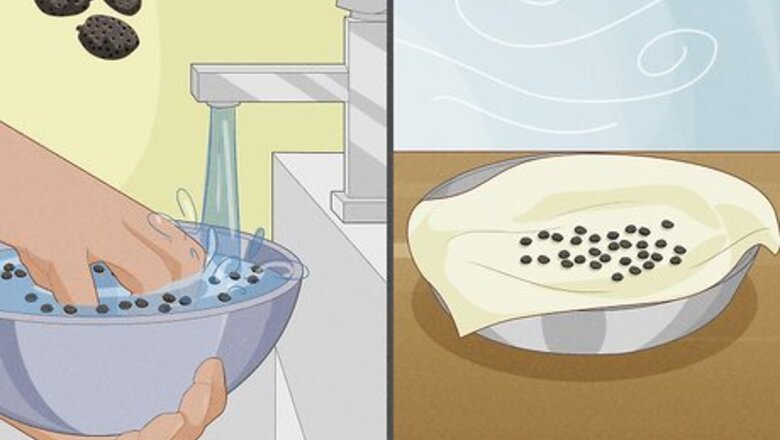
views
- Soak seeds in water overnight, then plant them in fresh potting soil, waiting 2-3 weeks for them to sprout. Or, grow fresh cuttings in a large pot for 3-4 months.
- Plant passion fruit seedlings in late spring. Space them 6–10 ft (1.8–3.0 m) apart in loose, loamy soil, and provide a nearby trellis for vines to climb.
- Harvest the fruits in March through September. Ripe fruits simply fall off the vine, so gather them off the ground and eat them within 2 days.
Starting Seeds
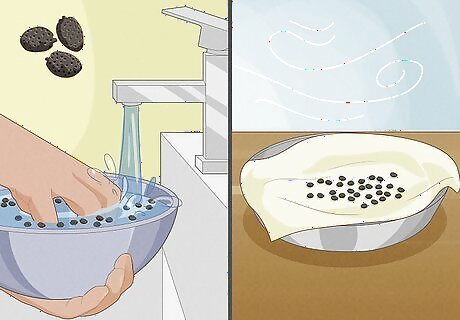
Gather fresh seeds from a passion fruit and rinse them with water. Freshly harvested passion fruit seeds germinate quickly, but older or store-bought seeds may not grow at all. Open up a passion fruit and remove at least 6 seed sacs from the inside, then place them in a colander. Under running water, rub the sacs with your fingers until they burst, and rinse away the residue. Passion fruits are somewhat difficult to grow from seeds, and can take years to flower and produce fruit this way, so prepare to be patient! Opt to grow your passion fruit from cuttings or seedlings for easier, faster results. To increase your chances of success, soak your seeds overnight in a bowl of warm water before planting them. If you’re not planting the seeds right away, place the seeds in an airtight plastic bag. Place the bag in the fridge, and plant them within 6 months.
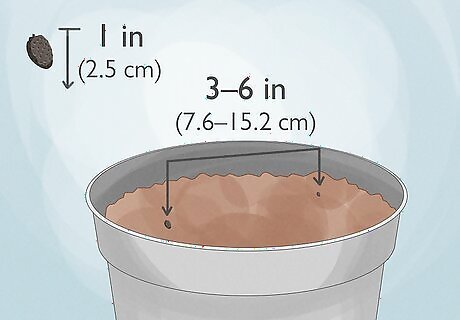
Plant the seeds 1 in (2.5 cm) deep in a pot of fresh planting soil. Fill a large, 12 in (30 cm) pot or a garden bed with fresh potting soil, then use your thumb to make holes about 1 in (2.5 cm) deep and 3–6 in (7.6–15.2 cm) apart. Then, pop a single seed into each hole, and cover each with soil. Start your seeds 8 weeks before the last frost in your region to have them mature by planting time. Consult an almanac to find your local frost dates.
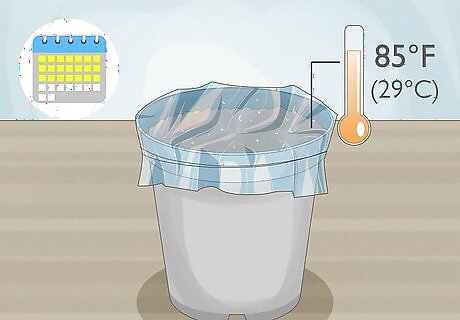
Cover the pot with plastic and keep the soil damp and warm for 2-3 weeks. Passion fruits are tropical plants and need plenty of moisture and water. Poke a few holes in some plastic wrap and cover the pot with it, or cover the pot with a humidity dome. Water the soil and keep it damp, but not flooded, until the seeds sprout above the soil, which could take a few weeks. Water until the soil is damp to the touch, but doesn’t pool when you poke a hole in the soil with your finger. Place the seeds in a warm place, like near a sunny window or in a greenhouse, and try to keep the temperature around the pot at about 85 °F (29 °C).
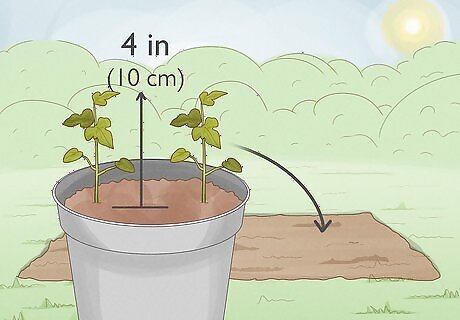
Transplant the mature seedlings once they’re about 4 in (10 cm) tall. After a few weeks, your successful seeds will send shoots up from the soil. After another week or 2, once these shoots have at least 2 leaf nodes (or joints on the stem where leaves emerge), it’s time to transplant them to their permanent home!
Starting Cuttings
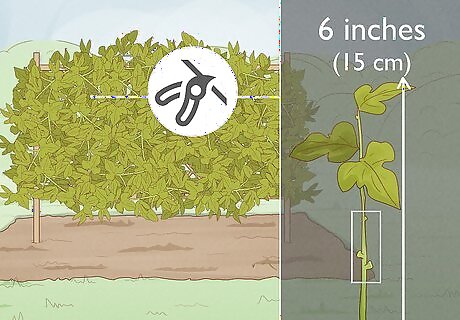
Take a cutting that’s at least 6 cm (2.4 in) long or has at least 2-3 nodes. In the spring, while the vines are in active growth, choose a mature, healthy passion fruit plant to take a cutting from—your own, a friend’s, or a wild plant will work. With a pair of garden clippers, snip off a portion of the vine that contains at least 2 leaf nodes (the joints on the vine from which leaves emerge), and which is at least 6 cm (2.4 in) long. Snip at the base of the shoot, and cut at an angle. Newer growth is more active, so choose a newer portion of vine (toward the ends) rather than an older portion. Trim away all but the topmost leaves and tendrils of the cutting to encourage new growth. Place the cutting in a shallow plate of warm water while you set to work preparing a pot for it.
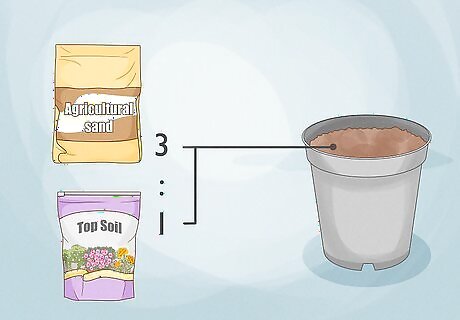
Plant the cutting in a 6–8 in (15–20 cm) pot with sand and potting soil. Mix together 3 parts potting sand and 1 part potting soil. Then, dig a hole in the center of the soil, about 2–4 inches (5.1–10.2 cm) deep, and place the cutting inside the hole, so that the cut portion faces downward. Cover the bottom portion of the cutting with soil. To encourage growth, dip the bottom of the cutting in a root hormone before you stick it in the soil.
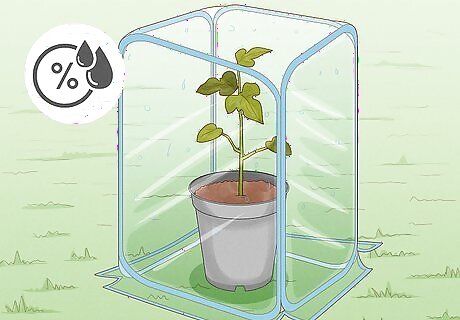
Water and keep the cutting in humid conditions for 3-4 months. Passion fruit cuttings are tropical plants, and they grow fairly slowly. Keep the soil damp, but not so wet it’s pooling. Additionally, cover the cutting in a plastic bag (with a several small holes cut into it), a humidity dome, or mist it 2-3 times a day to keep the plant itself moist. Keep the plant in indirect sunlight (in other words, a bright room, but where the sun doesn’t shine directly on the plant), and keep the area around the plant at about 85 °F (29 °C). If you live in a dry area, run a humidifier or place dishes of water-covered gravel around the base of the cutting to mimic the plant’s natural habitat. After 3-4 months, the cutting will have grown roots of its own, meaning it’s ready to transplant!
Transplanting Cuttings and Seedlings
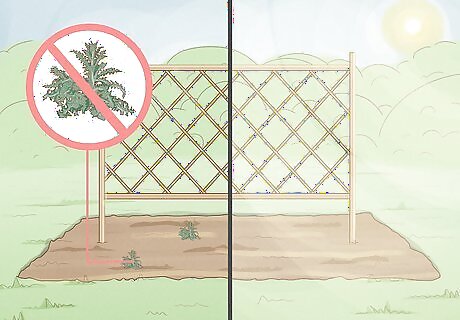
Construct a trellis in a sunny part of your garden. Survey your garden for a place that receives full sun for 6-8 hours a day, then set aside at least 6–8 sq ft (0.56–0.74 m) to plant the passion fruit. Then, build a trellis (or install a store-bought one) that spans 1 edge of the plot. Ideally, construct a trellis about 5–6 feet (1.5–1.8 m) tall, to give the plant plenty of room to climb. Alternatively, choose a plot near a wire fence or a porch railing which the vines can climb. This can help make your vine more of a natural fixture in your garden. Go ahead and pull any weeds in the plot. Passion fruit vines need their own space, and don’t play well with competition.
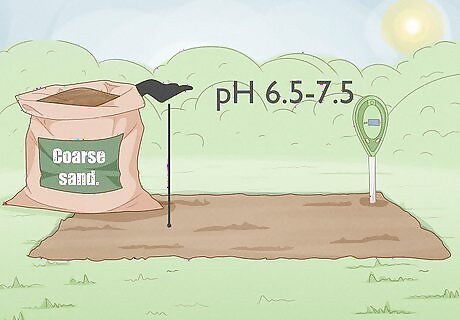
Lay well-draining soil into the plot, and alter the pH to around 6.5-7.5. Passion fruit needs light, deep soil that drains easily and contains plenty of organic material. Dig up the soil in your plot, about 1 ft (0.30 m) deep, and replace it with a sandy, loamy soil mixed with compost. Or, add this mix to a raised garden bed to promote soil drainage. Then, test and adjust the pH of the soil with a soil pH kit. Alternatively, add organic rotten manure, leaf mold, or other green plant waste instead of compost. If the soil is especially dense, lighten it by mixing in handfuls of coarse sand. How much to mix depends on the size of your plot, so refer to the instructions on the bag of garden sand. Add garden lime or wood ash (according to the instructions on the packaging) to raise the pH of the soil. Add sulfur or compost to lower the pH.
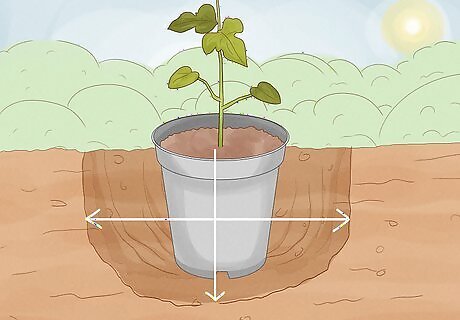
Transplant each seedling into a large hole in late April or May. Dig a separate, 5–6 in (13–15 cm) large hole for each seedling, with each hole at least 6–10 ft (1.8–3.0 m) apart. Make each hole about twice as wide as the current width of your plant, and dig at least as deep as the container your seedling currently rests in. Remove the seedling from the pot, place it in the hole, then cover the roots with soil. To remove the seedling from its pot, set the pot on its side and gently grip the base of the stalk. Then, slide the seedling out of the pot. Handle the roots as little as possible during the transfer. The roots are very sensitive, and if you damage them during the process, you could destroy the plant.
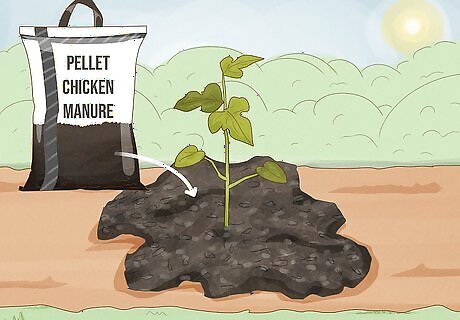
Add low-nitrogen fertilizer and mulch around the plant. Spread pellet chicken manure or another organic, slow-release fertilizer around the base of the plant to give it a boost of nutrients as it establishes itself. Opt for a 5-10-10 fertilizer, which is low in nitrogen. Also spread an organic mulch, like straw or wood chips, around the base of the plant to help the roots retain moisture. Gently push or dig some of the fertilizer into the top layer of the soil around the plant's base to let all of the roots access it. Water the newly planted seedling just enough to moisten the soil, but not so much that pools or bubbles form.
Daily and Long-Term Care
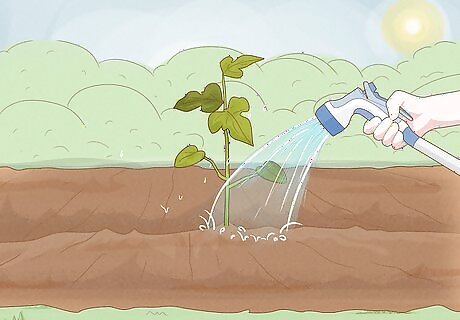
Keep the soil moist, but don’t flood the plant’s roots. Passion fruit vines need about 1 in (2.5 cm) of water per week, or about 6 US gal (23 L). Use a watering can or garden hose to gently water the seedlings about once a week, or any time the soil looks dry. Water until the soil is very damp, but do not allow muddy puddles to form, which is a sign that you’ve provided more water than the soil can absorb and drain. Planting in raised beds helps promote soil drainage, keeping your passion fruit’s roots well-aerated and preventing diseases like root rot.
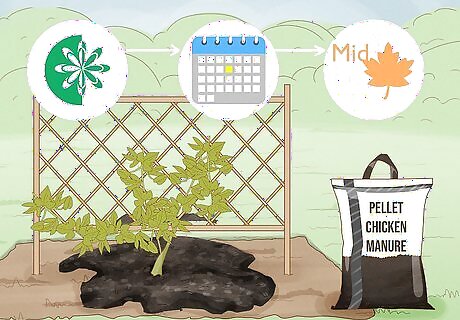
Feed your vines every 4-6 weeks with a general fertilizer. Passion fruit plants are heavy eaters, so sprinkle some all-purpose fertilizer onto their soil about once a month, according to the instructions on the fertilizer’s packaging. Only feed the plants during the spring and summer; they don’t need the nutrients in the winter. For even better results, use organic, slow-release fertilizers that are low in nitrogen. Chicken manure pellets are a good option.
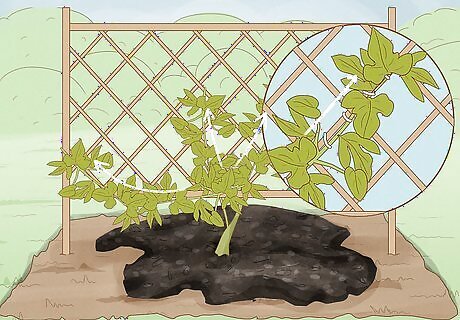
Tie the vines to the trellis with soft plant ties. As the vines become long enough to reach the trellis, train them to climb by tying them to the trellis itself. Loosely tie the mains stems to the lattice of the trellis every 6–12 in (15–30 cm), working directly up to the top. Then, let the vines grow freely downward.
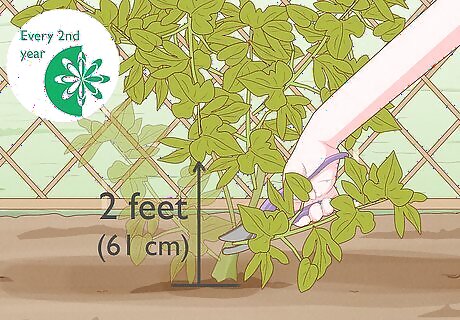
Weed as needed, and prune the vines in late February or March. Passion fruit vines can be easily crowded out, so pull any weeds you see immediately. Around March, snip away any excess shoots so the vines are well-spread and don’t have overlapping leaves from other tendrils. Throughout the year, cut away any dead or discolored (yellow or brown) shoots to the main vine to prevent diseases. Use shears to cut away branches that are below 2 feet (61 cm). Doing so clears away weak, old growth while also improving air circulation around the bottom of the plant. Make sure not to snip away the main, largest branch, which is the main source of growth for the vine.
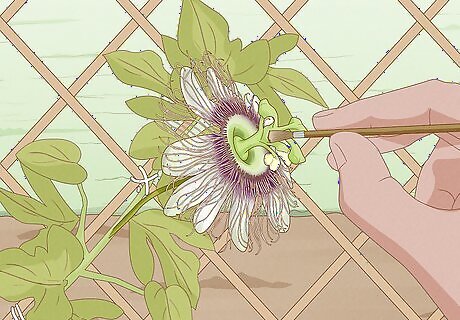
Propagate and pollinate your plant as blooms form. To make more vines, take cuttings from young shoots with at least 2-3 nodes, and plant them in fresh potting soil. Usually, bees handle pollination for you, but to help the bees along and help your vines grow new flowers and fruits: Take a small, clean paintbrush and collect the pollen from male flowers (any with pollen). Wipe the collected pollen onto female flowers (those without pollen) using the same brush. Alternatively, touch each flower’s stamen (the little stems that grow out of the flowers) with your thumb and index finger as you walk along the rows.
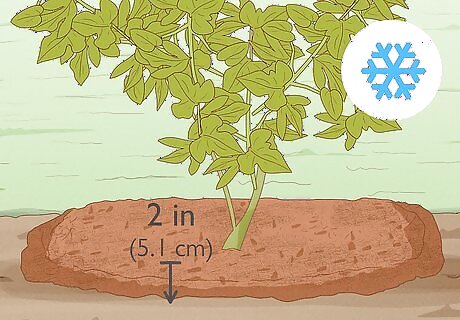
Add 2 in (5.1 cm) of mulch to protect the plant over winter. If you planted your passion fruit vines in a raise bed, move the bed into a greenhouse around September. Otherwise, cover the roots with a generous layer of mulch to protect them from freezing. It helps to plant the vines against a wall, or something that can protect them from cold winds.
Protecting Against Pests and Diseases
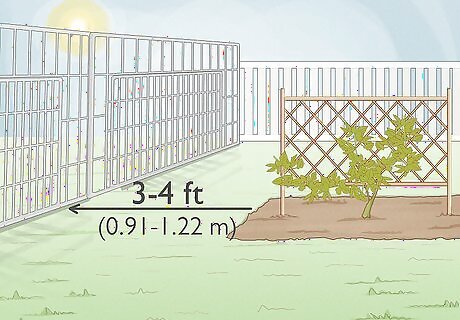
Construct a deer fence to protect the vines from animals. Rabbits and deer are drawn to fruiting vines. Build a deer fence 3–4 ft (0.91–1.22 m) away from the plot to deter them, using chicken wire, deer fencing, or another sturdy material. In addition, keep animals out by spraying coyote spray, or by planting sacrificial plants like hardy, prolific produce like lettuce or strawberries elsewhere in the garden.
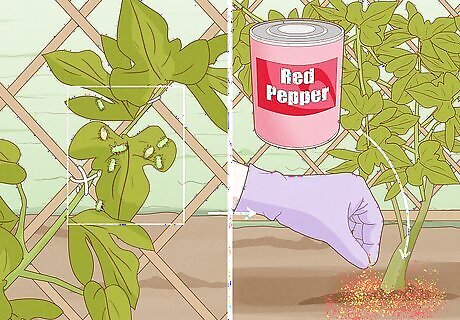
Keep pests away by misting the vines daily, or use organic pesticides. For daily pest prevention, simply spritz the vines with water. If you do see pests like aphids, mites, or mealybugs, apply food-safe or organic pesticides according to the instructions on the packaging to avoid damaging the plant and to keep the fruits safe for consumption. Discourage aphids by sprinkling liquid pesticide or red pepper flakes around the base of the plant. Hand-remove any large insect larvae or beetles. Wear gloves, and dispose of the insects in a plastic trash bag. Release beneficial garden nematodes into the soil to protect against harmful varieties of nematodes.
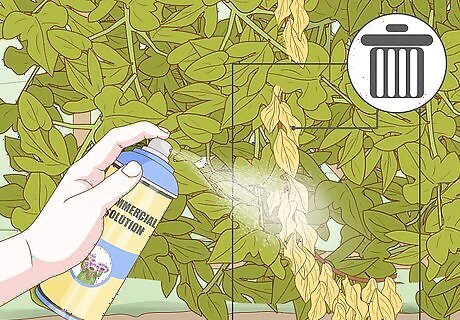
Trim away diseased vines and overcrowded leaves to prevent infections. Use garden shears to prune off any discolored or withered stems, which may be diseased. This also prevents fungal infections. In addition, spray the plant with an herbal fungicide to alleviate any mold spots. Prevent cellar rot and root rot by providing adequate soil drainage with sandy soil additions.
Harvesting and Eating
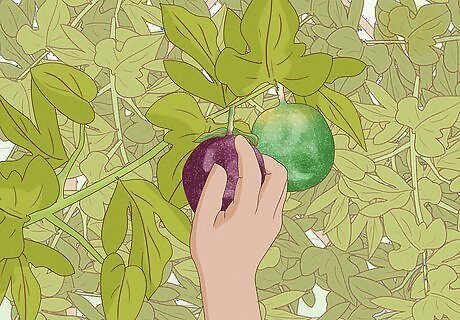
Harvest ripe passion fruit simply by picking it up off the ground. It can take a year to a year and a half before your plant will produce any fruit. But once it does, it’s easy to tell when the fruit is ripe. It’ll just fall! The thick skin protects the insides from damage, so simply gather any fallen fruit and bring them inside to eat. The vines produce fruit from midsummer through fall (about July-September). Collect the fruit within a couple of days after it drops to ensure the best possible quality. In addition, pick any fruits that have remained on the vine but have wrinkled skin. They may not be pretty, but they’re still edible.
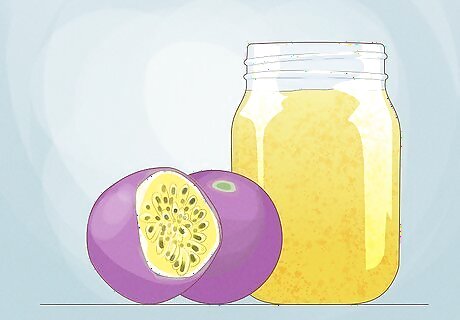
Eat the seeds whole, or pulp them out with a juicer. The “fruit” of passion fruit is the jelly-like casings around the seeds. The seeds are edible, so simply split a fruit with a knife, then scoop the seeds out with a spoon to eat. If you’d rather not eat the seeds, use a fruit juicer to extract the juice. Alternatively, blend the seed sacs in a blender, then strain them through a bit of cheesecloth to juice the seeds without a commercial juicer.
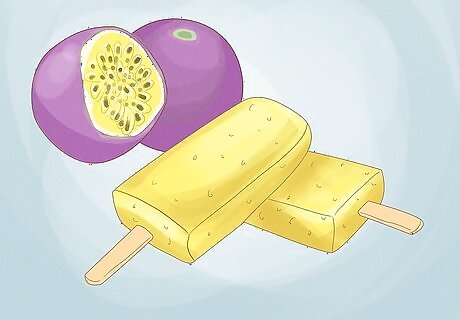
Use your passion fruit to make popsicles, mixed drinks, and more. Passion fruit juice is a versatile and endlessly remixable flavor. Pour some juice into ice cube trays with toothpicks sticking out, and freeze them overnight to make cool, sweet popsicles. Or, use the juice in cocktails and other beverages, like a passion fruit martini.




















Comments
0 comment